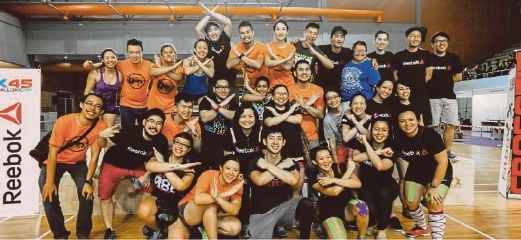These demanding workouts continue to be popular despite having received some bad publicity, writes Olivia Miwil
GERALDINE Voo had tried aerobics, belly dancing and Zumba workouts. However, she did not stick to these activities for long.
It was not until she tried her hand in CrossFit — commonly associated with high intensity exercise meant for weightlifters or marines — that she consistently made her way to the gymnasium for the past year.
“It was a friend who dragged me into the programme as she wanted to have a specific workout while juggling work and a role as mother.
“I never thought that I would be the one who got addicted. I have been coming three times for an hour every week,” she said, adding that she was paying RM250 as monthly coaching fees.
The 32-year-old government employee says CrossFit exercises gave her a sense of accomplishment.
“Prior to doing any difficult workout such as lifting barbells I would question why I was doing that activity. But I feel good when I am able to do it. I notice great improvement in my stamina and fitness from time to time after joining the programme,” she added.
Geraldine said the workout, usually done in a group, promotes a sense of togetherness when one has to endure some “pain” during workout.
CrossFit Inc was founded by former gymnast Greg Glassman in Santa Cruz, California in 2000.
DIFFERENT SETTINGS
The strengthening and conditioning programme has rapidly gained popularity, with more than 10,000 affiliated gyms worldwide, half of which are based in the United States. Others are established in other parts of the world, with eight in Malaysia.
CrossFit gymnasium, known also as “box” or “garage gyms”, have slightly different settings compared to normal gyms. They have training equipment meant for calisthenics, body weight and plyometrics, weightlifting and powerlifting, as well as endurance workouts.
Calisthenics is a form of gymnastic exercises that help develop health and vigour.
Activities performed for the purpose include sits up that use the abs mat to stabilise the pelvis and allow full contraction of the abdominal; push up with assistance of pull up bars or gymnastic rings, lunges and air squats (pistol).
For bodyweight workouts, a crossfitter usually does burpees, handstand push-ups and rope jumping (double unders).
Plyometric exercises include box jumps and squat jumps, stretch and contract muscles in rapid repetitions to increase muscle power. Meanwhile, barbells and dumbells are the commonly used tools for powerlifting and weightlifting.
Fitness Association of Sabah chairman Samuel Tan while the programme is suitable for all, it is essential for one to find a programme that fits one’s fitness level.
“Unless one has a strong athletic background and is willing to invest a lot of time in research and understanding how to train properly, he or she would probably want to join a CrossFit gym.
“There is endless benefit in training under certified coaches who have experience and knowledge as compared to only referring to workouts on YouTube,”
However, there had been a few controversies and lawsuits filed on health complications resulting from CrossFit programmes.
Rhadomyolysis, a condition of injured muscle cells that enter into the bloodstream and cause kidney failure, is said to be the most adverse effect from CrossFit overtraining.
Tan, who was exposed to CrossFit about seven years ago in the United States, started the affiliated gymnasium in Sabah. He believes the adverse effect of Rhadomyolysis has not deterred people from joining the programme.
At a recent inaugural CrossFit competition organised by the association, 156 participants, including seven from Hong Kong, Brunei (25), the Philippines (17), three Singaporeans and an Australian took part.
“It is a game where Crossfitters from around the world gather to gauge their ability and at the same time have good fellowship with other competitors,” said Tan.


No comments:
Post a Comment